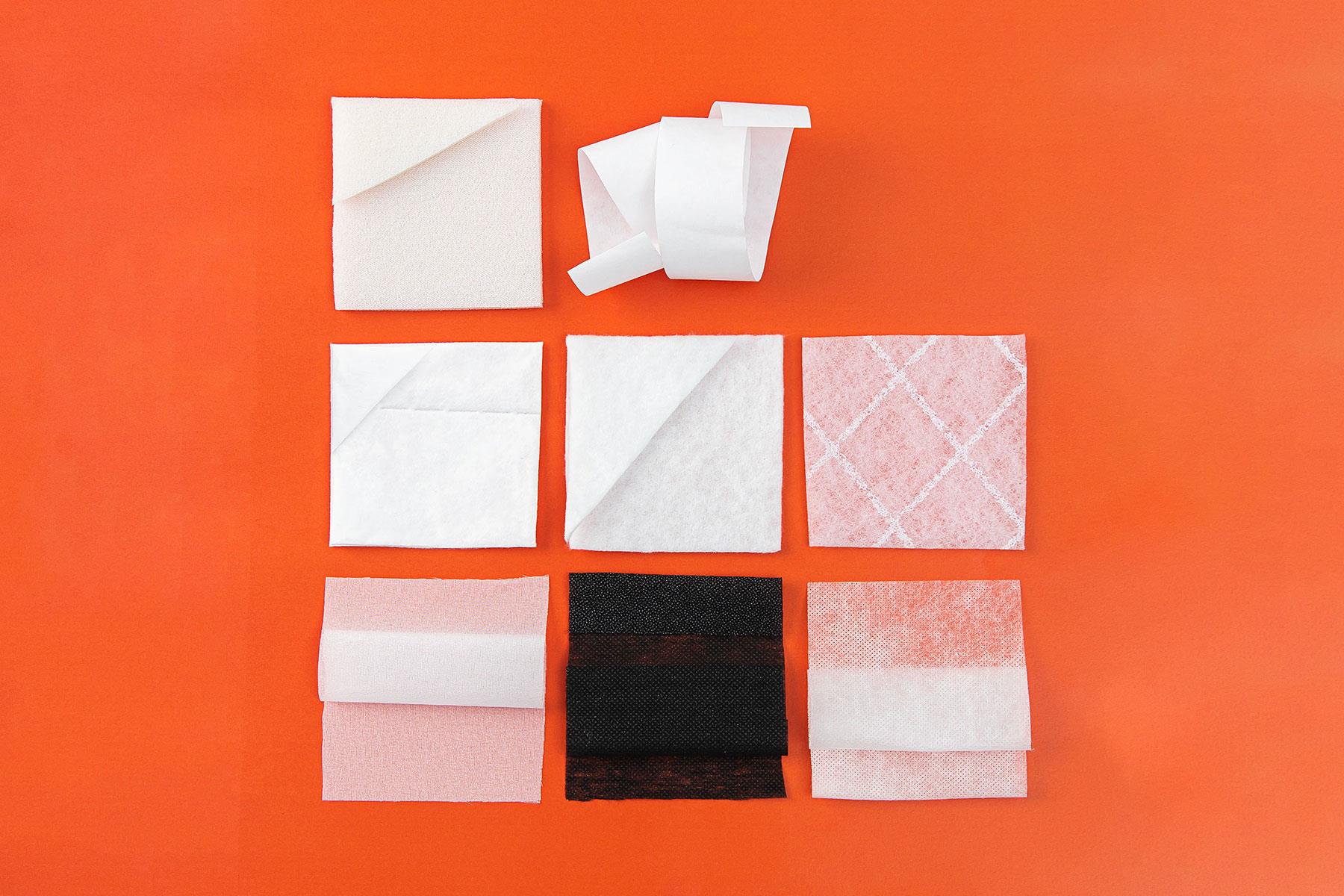

Interlining (often called Vlieseline) is a non-woven fabric used to stabilise fabrics in everything from snowsuits, necklines to potholders. Non-woven interlining can also be used in hobby projects, large and small, in the realm of handicrafts, and professional tailors use a wide range of interlining products too. This interlining guide is designed to help you choose the right type of interlining for your project.
About Vlieseline interlining
Vlieseline interlining is a non-woven material. Vlieseline interlining was invented by Freudenberg, originally a leather tannery. During the First World War, Freudenberg was forced to drop tanning leather as the market for tanned leather slumped. Freudenberg took in fabric remnants and experimented with fusing them. Freudenberg named the new material Vileda, from the German wie Leder. Today, Freudenberg sells non-woven interlining under the brand name of Vlieseline.
How to use non-woven interlining
It may seem unnecessary to apply interlining to your projects but it is worthwhile. The results are so much better.
Once you have found the interlining you wish to use, it is important that you follow the instructions for using it. If your interlining is adhesive, you should note that some need to be ironed on with steam and others without steam. Instructions for the use of our interlining are printed on the interlining itself. For example, our adhesive bag interlining is not washable. Once washed, the glue will no longer stick. Do not confuse our water-soluble interlining with batting. Water-soluble interlining disappears when it comes into contact with water.
For best results, always follow the instructions printed on the interlining. If in doubt, you are welcome to ask in our stores or contact Customer Services. Our staff can help you find the right interlining for your sewing project.
Generally, speaking, you are well-advised to choose a fine interlining. Use too coarse an interlining and the result may be too rigid. To avoid mistakes, we recommend that you test a small piece of interlining with your fabric before starting on your project. This helps you get an idea of how the interlining works with your fabric.
Which type of interlining should I choose?
If you are in the process of making a dress that requires a little extra stability in the neck opening, fine interlining is a good choice. However, many of our interlining products are versatile and can be used in many kinds of sewing and hobby projects. Check here to see which to choose.
If you are going to sew a cosy jacket or waistcoat, use interlining product no. 9365 Thermo MEIDA padding 65g/m2. It is a high-tech insulation material. MEIDA retains heat even when wet, so you don’t get to freeze. You can use it to make a ski jacket or a great toddler’s snowsuit as it insulates down to -8°C. This product is unsuitable for quilting because quilting destroys the insulation capacity. Non-iron. If you would like more information about alternative interlining products for your sewing project, please contact Customer Services or the staff at our stores.
We have a wide range of interlining products for blouses and dresses for you to choose from. However, we recommend Non-woven interlining no. 9501 and no. 9543 with glue 90 x 100 cm, available in black or white. These are standard interlining products that can be used in all kinds of necklines and other small garment details. You can of course also use these interlining products in other kinds of clothing. Another, slightly lighter, all-round interlining is no. 9561 Light Non-woven interlining from Freudenberg, available in white with glue. It can be used with very fine fabrics, e.g. silk. This interlining provides a stabilising effect, but is almost invisible.
For hemming trousers, we recommend no. 9270 Stretchfix hem interlining 30 mm (5 m). It is an excellent product for gluing two fabric pieces together. First, you iron the interlining onto one side. Then you lay the other fabric on top. Press and the two fabrics are glued together. Easy and efficient. If you want to reinforce the hem, you can sew it too.
Our water soluble interlining no. 9511 is used in embroidery. It dissolves in water. Lay a piece of water-soluble interlining over your template or motif and draw on the interlining. Tighten your fabric and water-soluble interlining in your embroidery frame/hoop. When you have finished the embroidery, rinse the interlining off using cold water. NB: this particular interlining is very thin and fluffy – Do not mistake this for batting.
We also offer a wide range of interlining products that can be used in all kinds of DIY projects. For example, no. 9250 Thermolam Freudenberg B: 90 cm 180g/m2 is an excellent choice if you are making potholders or tea cosies. Use double for extra good insulation. No. 9530 Voluminous Interlining white with glue is absolutely ideal used as a pocket lining in a bag or computer sleeve.
If you have any questions about which interlining to choose for your sewing project, or if you have ground to a halt in a project, feel free to ask in our stores or contact Customer Services. Our staff are on hand to give advice and guidance.